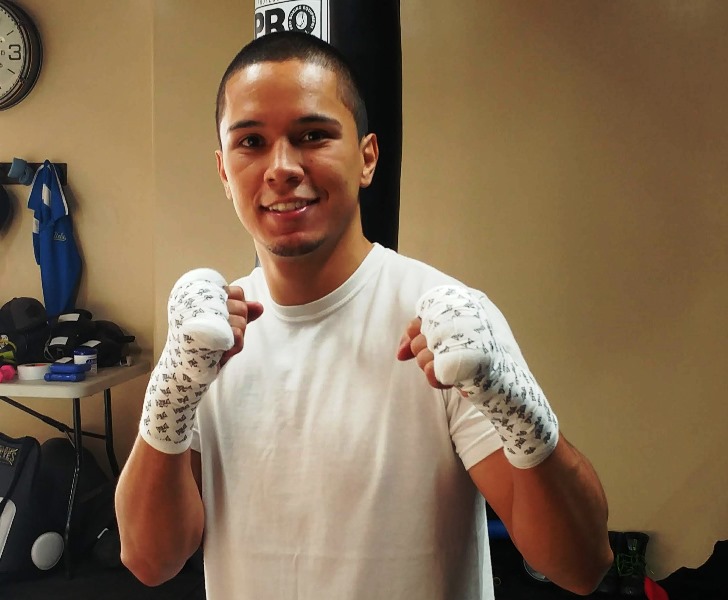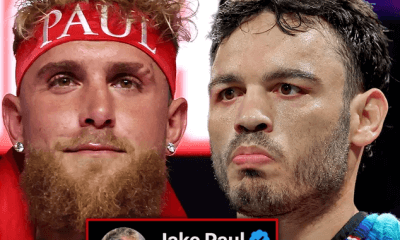Featured Articles
Saul “Neno” Rodriguez Returns to RGBA to Reload

Several years ago, Saul “Neno” Rodriguez was tabbed best new prospect by British journalists and was involved in a tug of war between rival boxing promotion companies vying for his services, but then came that day:
“I got caught and got sloppy,” said Rodriguez.
Getting sloppy might be satisfactory for actors, singers or painters, but in the world of prizefighting it can lead to a knockout loss in front of a nationwide television audience. It can also lead to losing a promotional contract with Top Rank.
That all occurred on June 28, 2019. For Rodriguez, that was a night that will live in infamy.
The lean machine-gun punching fighter who looks like a 16-year-old lost his promoter and ranking when he exchanged bombs with Mexican fighter Miguel Angel Gonzalez and was stopped in the third round at Pechanga Resort and Casino in Temecula.
It was a furious firefight and after 24 previous battles this time the dice rolled for the other guy.
Armed with redemption in his soul, the 26-year-old Riverside native Rodriguez (24-1-1, 18 KOs) won by knockout last Saturday in Texas and is eager to reclaim his place among the top prizefighters in the world without a world title.
Now he is a full-fledged lightweight.
Returning to the upper ladder of respectability and recognition takes time and refinement. There can be no slip-ups while re-building one’s reputation. But understanding that also takes self-evaluation.
“I need to work on my defense,” said Rodriguez quickly.
Rodriguez realized he needed to start over and had found success working with Robert Garcia and family. When the Riverside boxer first turned professional it was under the guidance of the Garcia family then led by Eduardo Garcia. They call him “Big G” and he is the father to Mikey and Robert and one of the geniuses of the sport.
“I learned a lot under the Garcias especially defense,” said Rodriguez who made a call and was accepted back to their fold.
Return to Normalcy
As an amateur Rodriguez was known for his flashing power and knockout wins. Despite head gear and thicker gloves, the skinny Riverside teen exploded on opponents and wrecked anyone in front of him. Crowds would gather anytime he would enter a boxing ring to see how he would perform.
The Garcias are always on the hunt for talent and during one of the amateur tournaments they spotted Rodriguez and invited him to their camp. Back in 2011 the Garcia’s gym was still located in Oxnard, though both Eduardo Garcia and Mikey Garcia had already moved to Riverside County.
Rodriguez was signed and though he still occasionally trained in Riverside, he would also train in Oxnard.
“I lived with the Garcias when I trained in Oxnard,” said Rodriguez. “They always treated me well, like family.”
From 2011 to 2016 the Riverside fighter ripped through opposition beginning with a one round destruction of a fighter named William Fisher at the Commerce Casino. Rodriguez walked in with a tight guard, chin tucked in and fired blows in a blur. The fight lasted less than a minute but those in attendance knew Rodriguez was special.
When Rodriguez’s contract with Top Rank neared the end, the Robert Garcia Boxing Academy in Riverside was already built and most of his team moved there. One day Floyd Mayweather walked into the gym to take a look around and get acquainted with a few of the young fighters including Rodriguez.
Near the end of December 2016 Mayweather visited Rodriguez again with an offer that could not be beat by rival promoters. He signed with Mayweather.
Another problem was the managerial aspect. Rodriguez decided he did not need a manager and instead parted ways with his former manager and also the Garcias who co-managed Rodriguez.
“We left on good terms, there were no bad feelings,” said Rodriguez.
Things didn’t pop with the Las Vegas-based promoter though not that they didn’t try. It’s just different when promoters have large television contracts. Mayweather Promotions did not have the clout to keep Rodriguez busy and he waited and waited.
Those few times Rodriguez entered the ring he looked out-of-sync and exposed. The tight guard was gone, the look of a hunter was replaced by a calm but less confident face of an inspector.
Rodriguez asked Mayweather Promotions to release him from contract and they did. After some months of lobbying, Top Rank re-signed Rodriguez and he competed on a Texas card and promptly won by second round knockout over Claudio Tapia in El Paso on November 2018.
Another win in Fresno on the undercard of Jose Carlos Ramirez title defense a year ago kept him busy. But four months later he returned to the boxing ring to perform in front of friends, family and fans at nearby Temecula. He lost the firefight and all of his many supporters were crushed.
One of those watching the fight was former trainer Robert Garcia.
“He’ll come back. A loss doesn’t mean its over,” said Garcia that night. “He is too good to not come back.”
The good ones always come back.
When Roberto Duran was kayoed by Tommy Hearns in 1984 many felt his career was done. But the Panamanian-Mexican returned at age 37 to knock down and defeat Iran Barkley for the WBC middleweight title in 1989. It was one of the most shocking upsets in the decade. Duran would fight another 12 years until he was 50 years old.
Of course, not everyone can be like Duran but many others have returned from knockout defeats like Manny Pacquiao, Tommy Hearns, Marco Antonio Barrera and others. The good ones find a way.
Reloading
Several months ago, Rodriguez realized that under Garcia’s family guidance he was at his best form and asked to return. The Garcia’s consented and now the Riverside lightweight feels comfortable.
“It was never bad between us,” said Rodriguez who actually lives close to the Robert Garcia Boxing Academy in Riverside. “It has changed a little, there are more fighters.”
One huge perk of training at RGBA is the abundance of talented fighters at camp on any day. It’s basically an army of three dozen elite prizefighters that spar each other at a moment’s notice under the guidance of the Garcia family consisting of Robert, Mikey, Robert Jr. “Pita” and of course the patriarch Eduardo.
Their combined boxing knowledge provides staggering results.
When Rodriguez returned, on one particular day, he was told to spar several of the younger undefeated fighters near his weight class. His instructions were clear: do not let them hit you cleanly.
“They just wanted me to use my defense and movement,” said Rodriguez. “They know my offense is there but I needed to be more defensive. I sparred some of the guys and just moved around and wasn’t allowed to punch back hard. It’s good practice.”
Since Rodriguez departed several years ago a few new faces have arrived including world champions Jose Carlos Ramirez and Abner Mares and also Vergil Ortiz Jr.
“They’re real cool guys,” said Rodriguez of the champions.
Of course, Mikey Garcia remains an integral part of the RGBA camp and a week ago was back at work showing his talent in a decisive win over the much bigger Jessie Vargas. It was a powerful demonstration and witnessed by many of the RGBA army who watched.
“That’s why he’s one of the best,” said Rodriguez. “He is going to surprise the other welterweights.”
Rodriguez feels he’s back where he belongs and ready to reload on the talented lightweight division.
“Yes, there is a lot of talent in the lightweights with guys like Devin Haney and Ryan Garcia,” said Rodriguez. “I like that. It’s my time.”
Time to resurface.
Check out more boxing news on video at The Boxing Channel
To comment on this story in The Fight Forum CLICK HERE
-

 Featured Articles4 weeks ago
Featured Articles4 weeks agoAvila Perspective, Chap. 330: Matchroom in New York plus the Latest on Canelo-Crawford
-

 Featured Articles3 weeks ago
Featured Articles3 weeks agoVito Mielnicki Jr Whitewashes Kamil Gardzielik Before the Home Folks in Newark
-

 Featured Articles10 hours ago
Featured Articles10 hours agoResults and Recaps from New York Where Taylor Edged Serrano Once Again
-

 Featured Articles4 weeks ago
Featured Articles4 weeks agoCatching Up with Clay Moyle Who Talks About His Massive Collection of Boxing Books
-

 Featured Articles5 days ago
Featured Articles5 days agoFrom a Sympathetic Figure to a Pariah: The Travails of Julio Cesar Chavez Jr
-

 Featured Articles3 weeks ago
Featured Articles3 weeks agoMore Medals for Hawaii’s Patricio Family at the USA Boxing Summer Festival
-

 Featured Articles7 days ago
Featured Articles7 days agoCatterall vs Eubank Ends Prematurely; Catterall Wins a Technical Decision
-

 Featured Articles4 weeks ago
Featured Articles4 weeks agoRichardson Hitchins Batters and Stops George Kambosos at Madison Square Garden




















